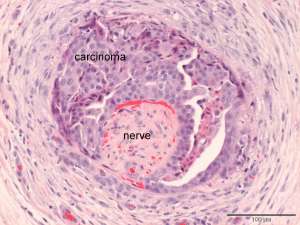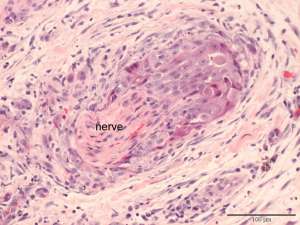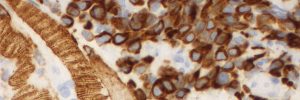Perineural invasion of a carcinoma in a dog
The following are H&E sections of incisional biopsies taken from a mass involving the prostate and encompassing the bladder neck in a 11-year-old, male Staffordshire bull terrier.


Final Diagnosis
Carcinoma associated with perineural invasion
Discussion
The morphology of the neoplastic infiltrate and the location of the tumour are most suggestive of a transitional cell carcinoma. Perineural invasion (PNI), also known as neurotropic carcinomatous spread, refers to the neoplastic invasion of nerves. It is recognised in the human literature as an important route of metastasis, in addition to lymphatic and haematogenous spread. It is most commonly reported in malignancies of the head and neck (particularly squamous cell carcinomas associated with intracranial extension along nerves), pancreas, large intestine, prostate, biliary tract and stomach.

